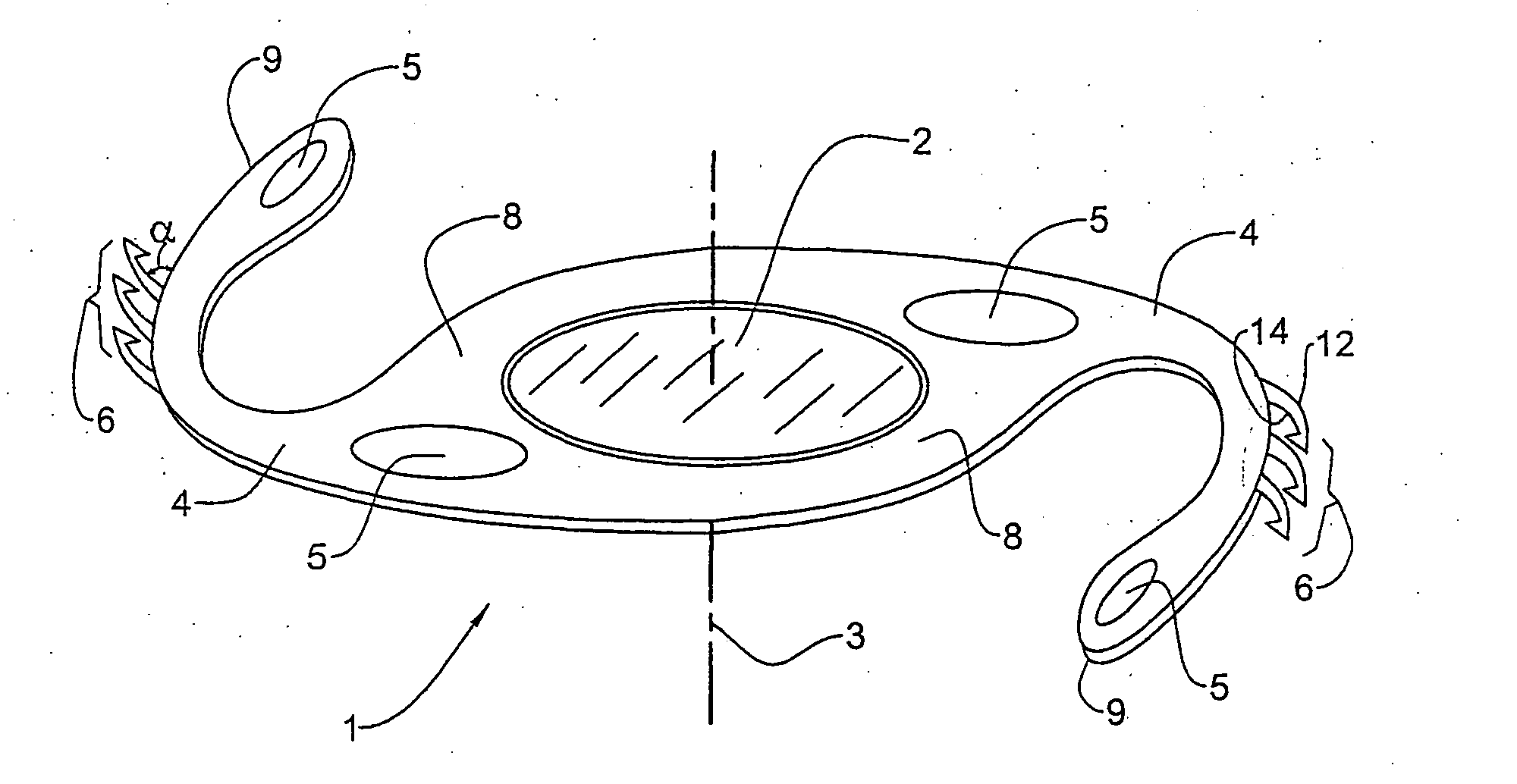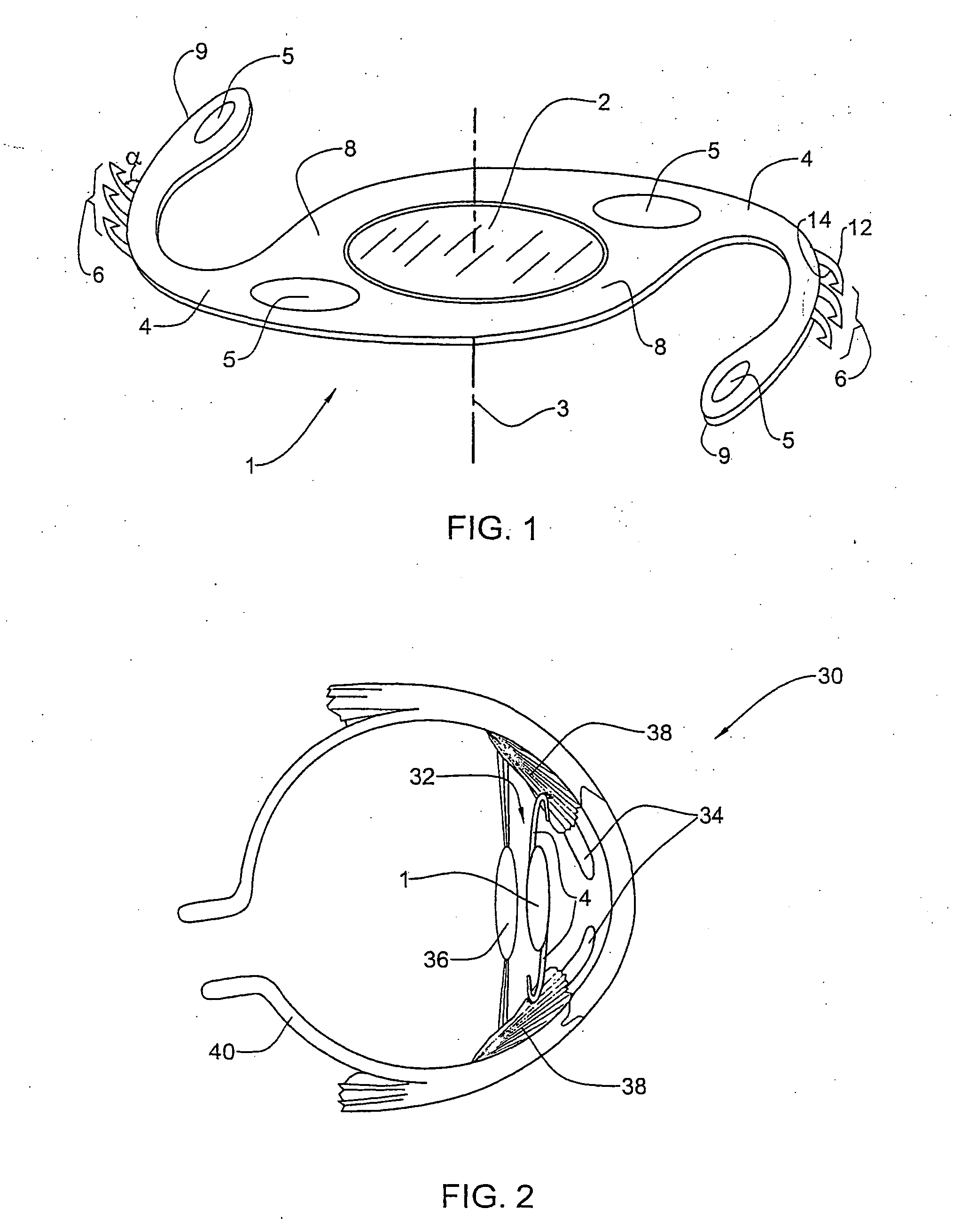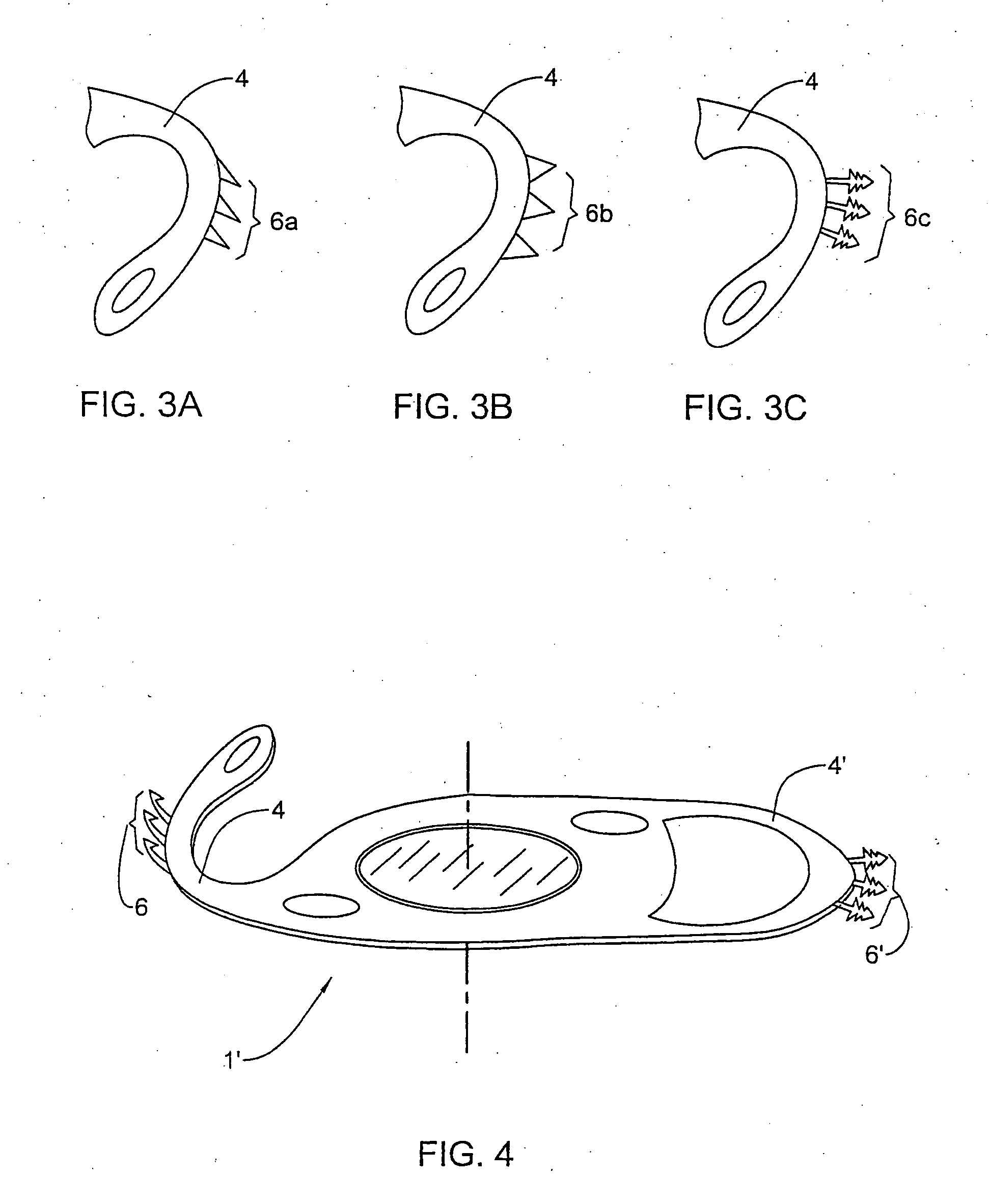Intraocular lens
a technology of intraocular lens and ocular lens, which is applied in the field of intraocular lens implantation, can solve the problems of no longer being able to provide a support base and various degrees of blindness, and achieve the effect of facilitating their penetration or grasping
- Summary
- Abstract
- Description
- Claims
- Application Information
AI Technical Summary
Benefits of technology
Problems solved by technology
Method used
Image
Examples
Embodiment Construction
[0015] An intraocular lens system 1 in accordance with one embodiment of the present invention is shown in FIG. 1. The lens system 1 consists of a lens 2 of any known type having an optical axis 3 and two flexible haptics 4 extending away from the circumference of the lens 2. The haptics 4 include longitudinal positioning holes 5 near their base 8 and near their tip 9. These holes 5 aid in the positioning of the lens system 1 and facilitate manipulations thereof. The holes 5 may have any appropriate shape and each haptic 4 may have any number of them at any appropriate location.
[0016] With reference to FIG. 2, the lens system 1 is adapted to be implanted in an eye 30 to replace a cataract. FIG. 2 shows that, when implanted, the lens system 1 is located in the posterior chamber 32 between the iris 34 and the posterior capsule 36, with its haptics 4 bearing against the ciliary sulcus 38 of the scleral wall 40 of the eye 30.
[0017] In accordance with the present invention, and as seen...
PUM
 Login to View More
Login to View More Abstract
Description
Claims
Application Information
 Login to View More
Login to View More - R&D
- Intellectual Property
- Life Sciences
- Materials
- Tech Scout
- Unparalleled Data Quality
- Higher Quality Content
- 60% Fewer Hallucinations
Browse by: Latest US Patents, China's latest patents, Technical Efficacy Thesaurus, Application Domain, Technology Topic, Popular Technical Reports.
© 2025 PatSnap. All rights reserved.Legal|Privacy policy|Modern Slavery Act Transparency Statement|Sitemap|About US| Contact US: help@patsnap.com



